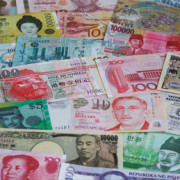Archive | June, 2012
Regional cooperation and integration
 Education
Education
 Finance sector development
Finance sector development
 Social development and protection
Social development and protection
 Finance sector development
Finance sector development

It is time for binding agreements on migrants’ rights in Asia

Migration flows within Asia are of considerable size. According to the ILO (2006), between 1995 and 2000, 40% of the 2.6 million to 2.9 million Asian migrant workers (registered and undocumented) went to other countries in Asia, including the countries of the Gulf Cooperation Council (GCC) where Asian migrant workers made up 40% to 70% of the labor force in 2000. Unfortunately more recent data are not available, but the significance of intra-Asian migration constitutes a continuing trend. This post follows the definition of “Asia” used by the United Nations, which includes countries in the Middle East. The migration system in Asia is primarily based on temporary migration largely of low-skilled and semi-skilled workers, facilitated by private recruitment agencies (Wickramasekara 2006)
The PRC must invest in education for sustained development

Among the many challenges facing the People’s Republic of China (PRC) in the coming decades, the most important is its need to massively expand its investment in education. In an age of unprecedented levels of globalization, successful development has meant for the PRC, as for other countries, passing through three phases: Phase 1, joining the regional and global supply chains and production networks; Phase 2, imitating and adapting; Phase 3, innovating. These phases need not be mutually exclusive and may overlap.
Can internationalization of the renminbi succeed where internationalization of the yen failed?

Since the second half of the 1990s, Japan has tried to promote the use of the yen as an international currency but has made little progress so far. Now, following in Japan’s footsteps, the People’s Republic of China (PRC) is promoting the internationalization of the renminbi. It would do well to consider why Japan’s attempt at internationalizing the yen has failed. Until the Asian financial crisis in the second half of the 1990s, Japan was reluctant to promote the internationalization of the yen, fearing that capital flows could destabilize the economy and render monetary policy ineffective, a problem widely considered to be the major cost for a country promoting the international use of its currency.
Social enterprises can add a new twist to capitalism

The time has come to look at “social enterprises”—a form of capitalism that includes social and environmental objectives in addition to the profit motive. More than a century ago, Henry Ford asserted that “a business that makes nothing but money is a poor business.” The world is now overrun by such “poor businesses.” The heedless pursuit of financial gains may produce happy management teams and shareholders, but it also results in an unhappy planet for businesses to operate in. The solution is not for these businesses to give some money to charity, or to get employees to play “builder” or “teacher” for a day as part of so-called “corporate social responsibility” initiatives.
Fostering exchange rate coordination: the role of an Asian Currency Unit

Over the past few decades East Asia has become increasingly intertwined economically as the share of interregional trade in total trade has increased sharply across most economies, driven by regional supply chains and production networks. These production networks have also fostered greater investment links, with the production process being broken down into subprocesses within a particular industry. The high degree of economic integration indicates that there may be a case for exchange rate coordination, as exchange rate misalignments may result in loss of competitiveness for a country, possibly leading to an increase in protectionism, which in turn could promote a round of beggar-thy-neighbor devaluations. Large swings in bilateral exchange rates could influence decisions about the location of new and existing investments. In contrast, greater stability in exchange rates would support investment by increasing price transparency and reducing currency-related hedging costs for companies. Finally, sharp exchange rate movements in one currency could affect another country’s ability to maintain a particular exchange rate regime.


Search
Subscribe / Connect to Asia Pathways
Subjects
- Agriculture and natural resources
- Blog
- Capacity development
- Climate change
- Economics
- Education
- Energy
- Environment
- Finance sector development
- Gender
- Governance and public sector management
- Health
- Industry and trade
- Information and Communications Technology
- Infrastructure
- Miscellaneous
- Population
- Poverty
- Private sector development
- Regional cooperation and integration
- Sanitation
- Social development and protection
- Transport
- Uncategorized
- Urban development
- Video Blog
- Water
Recent Posts
- Artificial intelligence: A new driver for inclusive growth and development?
- Increasing trust in cross-border e-commerce and artificial intelligence
- Enhancing access to maternal and newborn healthcare in developing Asia
- Can electric vehicles lead the way to a sustainable future?
- Mitigating climate-related sovereign risk to accelerate action on the climate emergency




Recent Comments